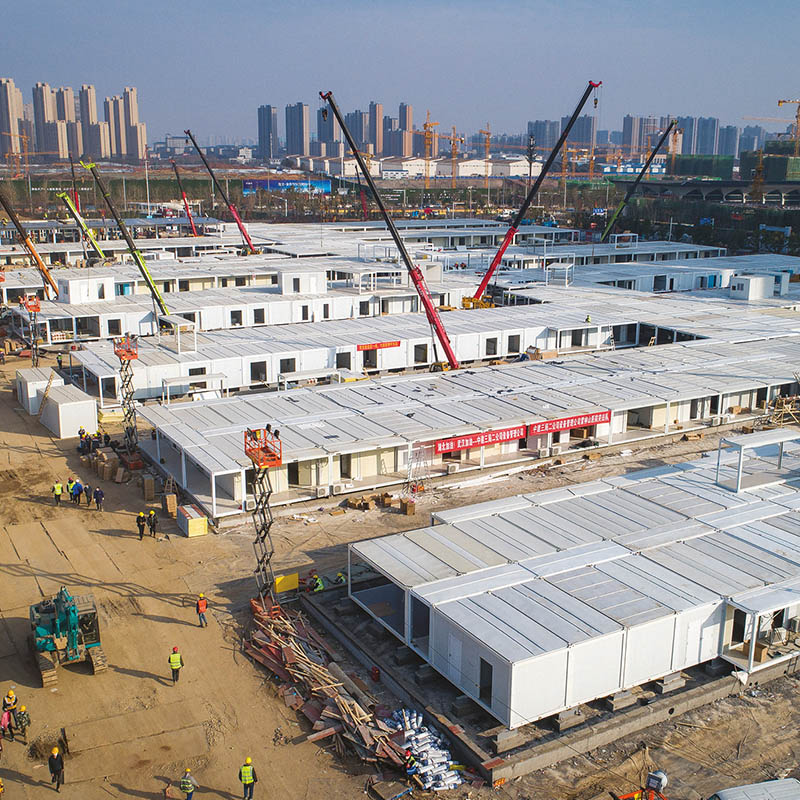Adaptable Spaces
September 24, 2020
THE ROLE OF TRANSIENT STRUCTURES AND SPACES IN RESPONSE TO A PANDEMIC AND OTHER EMERGENCIES
COVID-19 has upended urban life as we know it. It has been many things; amongst which the crisis for healthcare space has been severely exacting. In the past, we have mostly encountered ‘bang’ events like natural calamities or terror attacks. Their fallout was a sudden demand for large spaces to provide shelter and medical aid.
However, these events were contained to a location and the number of affected was predictable. The pandemic has posited a vastly different situation where there is a relentless swell in the number of people requiring medical attention across the globe. Emergency and medical parlance defines this as a ‘surge’ event. There has been more than 8 million people who have tested positive (accurate up to the time of writing), of which more than 3.5 million are still in some form of medical shelter receiving treatment [1]. This has created an immense strain on emergency resources, particularly space to provide for these affected.

CREATING TRANSIENT CAPACITY WITHIN HOSPITALS
Hospitals have adopted all means necessary to free up space, especially intensive care spaces. This has been done by cancelling or deferring elective procedures and non-critical admissions, reopening closed units and converting hallways, operating rooms and recovering rooms to treat COVID-19 patients.
Antonio Pesenti, head of the Italian Lombardy regional crisis response unit, which was one of the worst affected areas in Italy, summed up the situation, “We’re now being forced to set up intensive care treatment in corridors, in operating theatres, in recovery rooms. We’ve emptied entire hospital sections to make space for seriously sick people.” [4]
CONVERTING NON-HEALTHCARE FACILITIES
Termed as Alternative Care Sites (ACS)5, these follow the standard practice of making use of certain large capacity non-healthcare facilities to provide shelter. For the pandemic, they are being repurposed as patient care sites that are not equivalent to hospitals. Yet, they can significantly bolster a city’s capacity to care for non-critical cases and relieve the pressure on hospitals to serve those who need intensive care.
Various agencies across the world (such as the World Health Organization; the Centers for Disease Control and Prevention; the American Institute of Architects) have been devising specific set of guidelines to help authorities and industry practitioners to swiftly repurpose these spaces for [6]:
- patient isolation and as alternative to home care for infected patients;
- limited supportive care for non-critical infected patients;
- care for recovering, non-infected patients;
- quarantine of contacts of confirmed cases; and
- primary triage and rapid patient screening.

Bibliography
[1] Covid-19 Coronavirus Pandemic: Coronavirus Cases. [Online] https://www.worldometers.info/coronavirus/.
[4] James Mackenzie, Crispian Balmer. Italy locks down millions as its coronavirus deaths jump. Physician’s Weekly. [Online] March 9, 2020. https://www.physiciansweekly.com/italy-locks-down-millions/.
[6] Use of Alternative Medical Care Facilities in the COVID-19 Pandemic. Clinicians’ Biosecurity News. [Online] April 7, 2020.
To read the complete article, get your hardcopy at our online shop/newsstands/major bookstores; subscribe to FuturArc or download the FuturArc App to read the issues.
Previously Published Main Feature
Contact us at https://www.futurarc.com/contact-us for older commentaries.
